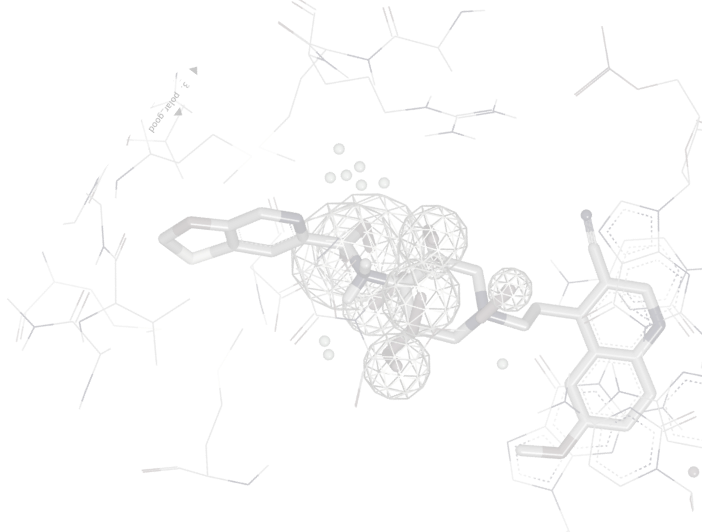
Quacpac TK
Quacpak TK offers everything necessary to do charges well. As the chemistry of molecular interactions is a matter of shape and electrostatics, accurate or at least consistent charge representation is critical in drug design. However, even the best charge models are of limited value if protonation states are wrong.
Quacpac TK provides pKa and tautomer enumeration in order to get correct protonation states. It also offers multiple partial charge models (including MMFF94 [1], AM1-BCC [2], and AMBER [3]) that cover a range of speed and quality in order to allow appropriate charging for every end use.
Quacpac TK's approach to tautomeric enumeration is to provide multiple tautomeric states rather than one "correct" tautomer. Subsequent downstream processes are then used to identify the appropriate tautomeric form.

Features
- Protonation state enumeration for pH 2-14
- Tautomer enumeration and canonicalization
- Gasteiger and MMFF94 [1] partial charges at about 1000 molecules per second
- HF/6-31G* quality charges with AM1-BCC [2] at 1 molecule per second for drug-sized molecules
- Set a single favorable ionization state for pH=7.4

For more detailed information on Quacpac TK, check out the link below:
Cheminformatics
The Cheminformatics suite of toolkits provides the core foundation upon which all the OpenEye applications and remaining toolkits are built.
- OEChem TK Core chemistry handling and representation as well as molecule file I/O
- OEDepict TK 2D Molecule rendering and depiction
- Grapheme™ TK Advanced molecule rendering and report generation
- GraphSim TK 2D molecular similarity (e.g. fingerprints)
- Lexichem TK name-to-structure, structure-to-name, foreign language translation
- MolProp TK Molecular property calculation and filtering
- Quacpac TK Tautomer enumeration and charge assignment
- MedChem TK Matched molecular pair analysis, fragmentation utilities, and molecular complexity metrics
Modeling
The Modeling suite of toolkits provides the core functionality underlying OpenEye's defining principle that shape & electrostatics are the two fundamental descriptors determining intermolecular interactions. Many of the toolkits in the Modeling suite are directly associated with specific OpenEye applications and can, therefore, be used to create new or extend existing functionality associated with those applications.
- OEChem TK Core chemistry handling and representation as well as molecule file I/O
- FastROCS™ TK Real-time shape similarity for virtual screening, lead hopping & shape clustering
- OEDocking TK Molecular docking and scoring
- Omega TK Conformer generation
- Shape TK 3D shape description, optimization, and overlap
- SiteHopper TK Rapid Comparison of Protein Binding Sites
- Spicoli TK Surface generation, manipulation, and interrogation
- Spruce TK Protein preparation and modeling
- Szybki TK General purpose optimization with MMFF94
- Szmap TK Understanding water interactions in a binding site
- Zap TK Calculate Poisson-Boltzmann electrostatic potentials
References
- Merck molecular force field. I. Basis, form, scope, parameterization, and performance of MMFF94 Halgren, T. A. J. Comp. Chem, 1996 17, 490.
- Fast, efficient generation of high-quality atomic charges: AM1-BCC Model. II: Parameterization and validation Jaklian, A., Jack, D.B. and Bayly, C., J. Comp. Chem, 2002, 23, 1623-1641.
- Application of the multimolecule and multiconformational RESP methodology to biopolymers: Charge derivation for DNA, RNA, and proteins Cieplak, P., Cornell, W.D., Bayly, C. and Kollman, P.A., J. Comp. Chem, 1995, 16, 1357.
miniCUP Cambridge 2025
Cadence Announces New Life Sciences Leadership
Expanding Orion’s Capabilities with AI
miniWebinar: Faster, Larger, Smarter: Filling the Funnel for Ultra-Large Scale Virtual Screening
Resources
Glimpse the Future through News, Events, Webinars and more
Event
miniCUP Basel 2025
Event
miniCUP Cambridge 2025


